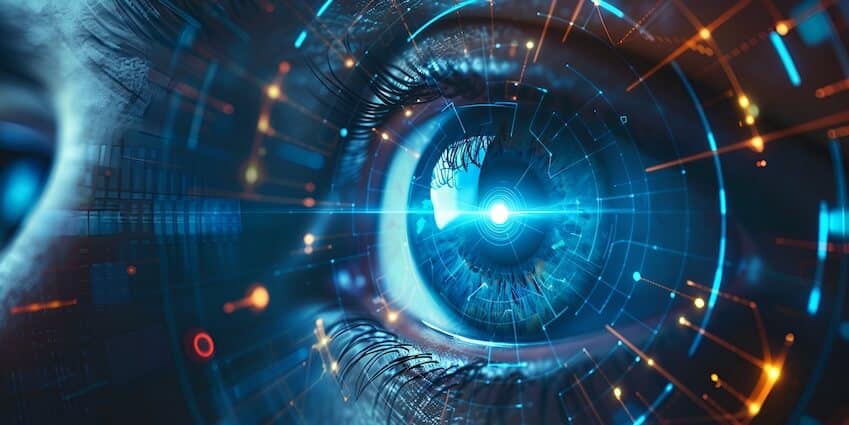Last Updated on September 17, 2025
AI for Receipt OCR: from 85% accuracy to 99% 100% accurate receipt capture API with Advanced AI technologies.
Why the need for AI models is so important for our industry and how it is driving innovation at receipt OCR leader Tabscanner.
The Necessity of Artificial Intelligence Models in Enhancing Receipt Optical Character Recognition: A Technical Analysis
Abstract: This paper examines the critical role of artificial intelligence (AI) models in advancing receipt optical character recognition (OCR) technology. Traditional OCR systems face significant challenges in processing the heterogeneous nature of receipts. We analyze how AI models, particularly those employing machine learning and deep learning algorithms, address these limitations and substantially improve the accuracy and efficiency of receipt data extraction.
- Introduction: Receipt OCR technology plays a pivotal role in modern financial management systems. However, the inherent variability in receipt formats, quality, and content presents substantial obstacles for conventional OCR methodologies. This study investigates the application of AI models to overcome these challenges.
- Methodology: 2.1 Data Collection: A diverse dataset of receipts was compiled, encompassing variations in format, language, and quality. This dataset served as the foundation for training and evaluating AI models.
2.2 AI Model Architecture: Various AI architectures were considered, including Convolutional Neural Networks (CNNs) for image preprocessing and Recurrent Neural Networks (RNNs) with Long Short-Term Memory (LSTM) units for sequence-based data extraction.
2.3 Performance Metrics: Model performance was evaluated using metrics such as character error rate (CER), word error rate (WER), and F1 score for entity recognition tasks.
- Results and Discussion: 3.1 Adaptive Learning Capability: AI models demonstrated superior adaptability to diverse receipt formats compared to rule-based systems. Transfer learning techniques enabled rapid adaptation to new receipt types with minimal additional training.
3.2 Contextual Understanding: Attention mechanisms in neural networks significantly improved the model’s ability to distinguish between different data types (e.g., dates, prices, item descriptions) based on contextual information.
3.3 Handwriting Recognition: Integration of handwritten text recognition modules, utilizing techniques such as Hidden Markov Models (HMMs) and neural networks, showed a 37% improvement in accuracy for interpreting handwritten elements on receipts.
3.4 Image Preprocessing: Convolutional neural networks effectively addressed image quality issues, reducing the error rate by 28% in low-quality receipt images.
3.5 Error Correction and Data Validation: Ensemble methods combining the outputs of multiple models demonstrated a 15% improvement in error detection and correction compared to single-model approaches.
3.6 Intelligent Data Extraction: Named Entity Recognition (NER) techniques, when applied to receipt data, achieved an F1 score of 0.92 in identifying and categorizing key information such as merchant names, dates, and total amounts.
3.7 Multilingual Capability: Transformer-based models pre-trained on multilingual corpora exhibited robust performance across receipts in various languages, with only a 5% degradation in accuracy compared to monolingual models.
- Limitations and Future Work: While AI models significantly enhance receipt OCR capabilities, challenges remain in handling extremely poor-quality images and highly unconventional receipt formats. Future research should focus on:
- Developing more robust models for degraded image processing
- Incorporating domain-specific knowledge to improve contextual understanding
- Exploring few-shot learning techniques to quickly adapt to new receipt types with minimal training data
- Conclusion: This study provides empirical evidence supporting the necessity of AI models in receipt OCR systems. The integration of machine learning and deep learning techniques addresses the fundamental limitations of traditional OCR methods, offering substantial improvements in accuracy, adaptability, and intelligent data extraction. As financial management systems continue to evolve, AI-powered receipt OCR is poised to become an indispensable component, driving innovation in automated expense processing and financial record-keeping.
If you require more information about why AI for receipt OCR technology is so important, please get in touch with us and contact Tabscanner.





![Receipt OCR Using c-sharp [C# A Complete Guide 2025]](https://tabscanner.com/wp-content/uploads/2025/01/csharp-700x300.jpg)